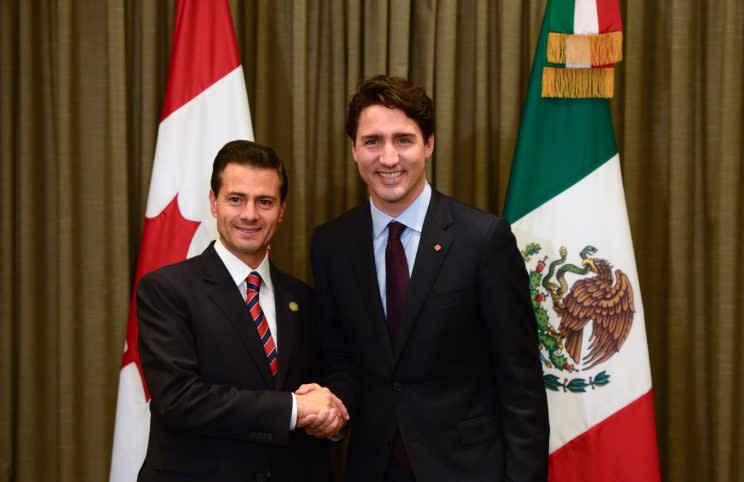
A new report on wireless broadband is out, and it may not leave readers cheering “USA! USA!” According to OpenSignal’s study, Mexico, Canada, France, the United Kingdom and more than 50 other countries offer faster LTE cellular data speeds than the U.S.
Still, the latest installment of this biannual survey by the London-based research firm isn’t all bad. OpenSignal’s findings, based on almost 20 million reports collected by its app from 558,260 users in the first quarter of the year, also show that the U.S. is making strong progress in expanding LTE availability to more users, even if it’s not always the fastest.
A need for speed in any language
According to OpenSignal’s data the average LTE download speed in the U.S. was 14.99 megabits per second (Mbps) in the first quarter of 2017. That’s not exactly bad — it’s an improvement from the 13.95 Mbps average it the survey reported six months earlier. But a wide variety of other countries offered much faster speeds.
A speedier wireless connection means you can download apps faster and share photos quicker, as well as stream Ultra High Definition video and transfer the sort of files that would ordinarily require a wired connection.
Singapore led OpenSignal’s list with an average of 45.62 Mbps, followed by South Korea with 43.46 Mbps and Hungary with 42.61 Mbps.
The next dozen countries all saw average download speeds above 30 Mbps. You can fairly object that most are in one part of Europe or another and therefore don’t require local wireless carriers to cover large expanses like the American West, but Australia still manages 33.76 Mbps while Canada tops out at 30.58 Mbps.
The U.S., meanwhile, lingers in the bottom 20 with 14.99 Mbps. That’s below the worldwide average of 16.4 Mbps and behind Russia (16.64 Mbps), Hong Kong (16.01 Mbps) and Jordan (15.09 Mbps). Sixteen countries trail the States, with India (5.14 Mbps, barely faster than 3G) coming closest in terms of population and area. OpenSignal didn’t post data for China.
Another bandwidth-analysis service, Ookla’s Speedtest.net, posted somewhat consistent numbers in its last round of country-specific figures. It found that LTE-capable phones that could connect to a network in the U.S. averaged 19.61 Mbps over the first six months of 2016. In Canada, LTE phones yielded 25.21 Mbps downloads on average, while in Mexico they managed speeds of 16.19 Mbps.
The other part of the equation: availability
The U.S. might not have the fastest data speeds, but it does have one of the highest “availability” scores — OpenSignal’s term for how much time users stay connected to an LTE network.
We’re fourth in the world with 86.5% availability, after South Korea (96.38%), Japan (93.48%), and Norway (86.6%).
Our nearest neighbors didn’t fare as well. Canada had 81.1% LTE availability and Mexico 69%.
OpenSignal’s data also shows considerable progress for U.S. LTE networks. In November, the company’s data showed domestic LTE availability ranked tenth in the world, at 81.3% and download speeds averaged 13.95 Mbps.
It’s important to note that “availability” doesn’t equal “coverage.” These numbers don’t show that 86.5% of America’s surface has LTE — only that phones running OpenSignal’s apps had LTE signals 86.5% of the time.
Beyond bragging rights
There are two lessons to take away from these data points, and looking up housing costs inSingapore or Seoul should not be either of them.
The first is that competition works. The fear of losing subscribers to rivals has kept the big four U.S. carriers working hard to deliver faster speeds in more areas. And net-neutrality rules that bar internet providers from charging sites extra for faster delivery of their data don’t seem to have held that work back, despite all the forecasts of doom from opponents of open-internet regulations.
The other is that good ideas in telecom policy don’t stop at the water’s edge. We should be willing to look at what other countries have done to speed up broadband access, whether it’sblocking telecom mergers or making it easier for wireless carriers to add capacity — then steal their best ideas without bothering to send a check in return.
